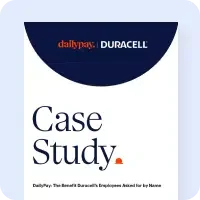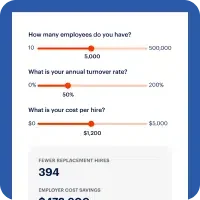Understanding the hidden toll an On-demand Pay Program can take on your Payroll team if structured improperly
Over the last few years, on-demand pay has gained more and more traction among employers. Among the key considerations when evaluating an on-demand pay program is understanding the resources needed for implementation and on-going program maintenance, and this is essentially one of the deciding factors to ensure the success of the program, while keeping the work for your team minimal.
During your vendor research, you probably have come across some marketing jargon along the lines of “We can implement on-demand pay in no time at all.” Wondering if it sounds too good to be true? Well, it is.
Real-world implementation timelines are likely to be similar for all major vendors offering a full-featured and fully compliant product, assuming they have direct experience working with your TMS and HCM system.
Unfortunately, some on demand pay vendors promise unrealistic launch schedules (e.g., a matter of days or a single week) to lure companies in, without revealing the fact that the oversimplified implementation process they have upfront only promises you more HR effort needed to clean up “shortcuts” later on, and more Payroll resources wasted on manual work every single pay period.
As it turns out, such hidden, recurring burdens from an improperly structured on-demand pay program can add up to be much more expensive for your team than doing it right from the very beginning.
At DailyPay, we make sure to provide full transparency and a detailed timeline for our thorough implementation and testing process. This is to ensure that post-DailyPay implementation, your Payroll department simply runs payroll as it always has since the integration has been fully integrated and automated. When we say “no change to Payroll,” we mean it.
This is very different from alternative models that require the Payroll department to run a payroll deduction. Very often, the vendor utilizing this model will promise you a “quick and simple” implementation process. The truth is, instead of the vendor doing the majority of the setup work upfront, the burden of monitoring the program manually, post-launch, will fall entirely on your Payroll department. If you account for all these hidden costs from a long-term perspective, the total cost of ownership of this program can be much more expensive than the “advertised” costs of a half-baked implementation process.
The Deductions Model requires a deductions file that instructs your Payroll team to process a wage deduction for each team member enrolled in the program for vendor repayment. That means manual intervention is required by the Payroll team if any of the following events occurs:
- There is not enough gross pay to cover all ordinary deductions and the vendor payback deduction
- An error is suspected in the amount listed in the deductions file
- Deductions exceed the amount that is available due to a statutory garnishment (e.g., mandatory child support order)
More importantly, splitting up a wage payment through wage deduction can expose your company to being out of compliance with tax withholding filing obligations. Through the deduction model, your company will remit only a portion of the employee’s pay on payday; the vendor is deemed to have issued the rest. Therefore, the employer owes the withholding tax on the day of the advance. This additional off-cycle withholding tax filing is likely a non-starter for your Payroll department.
Given this meaningful cost and compliance risk for the Payroll department, we have observed more and more resistance to on-demand pay programs that are built on the deduction model in the market, especially among larger enterprises with rigorous compliance standards (i.e., Fortune 100 companies).
Want to learn more about DailyPay’s thorough implementation process? Click here to book your no-obligation consultation today.













